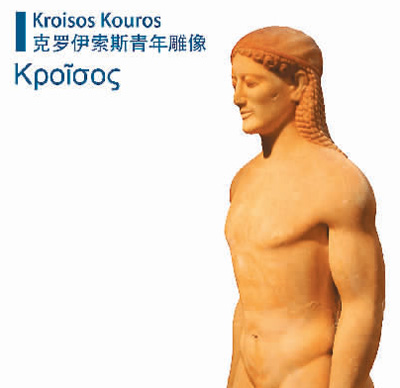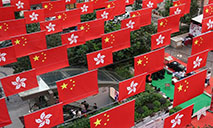Digitalization of cultural heritage shortens distance between civilizations
In 2021, China and Greece will celebrate the China-Greece Culture and Tourism Year, with one of the focus areas being cooperation in digitalizing cultural heritage.

(Photo provided by Qingcheng Ruixian)
As a cultural heritage digitalization project, an online exhibition, entitled “Parallel Space: Meet the Terracotta Warriors in Greece,” was launched on the websites of the National Archaeological Museum in Greece and the Emperor Qinshihuang’s Mausoleum Site Museum on Sept. 16.
The Beijing-based Qingcheng Ruixian, a cultural heritage research interpretation and value-added operation brand, is an implementation partner for the exhibition. He Yan, director of Qingcheng Ruixian, explained how they planned and designed the exhibition, which displayed colored terracotta warriors to Greek visitors, presenting a creative integration of the real world and virtual space to highlight a dialogue between Chinese and Greek civilizations in the post-pandemic era.
Based on a large amount of reliable digital information, the exhibition truthfully recreated the warrior figures and shared with visitors an artistic interpretation of the cultural relics, shortening the distance between different cultures, different historical periods and people from different countries.

(Photo provided by Qingcheng Ruixian)
In 2018, Qingcheng Ruixian signed a memorandum of understanding for cooperating on digitalizing cultural heritage together with China’s Tsinghua University, the National Technical University of Athens and Postscriptum, an investment company based in Greece. Under the agreement, the Chinese and Greek sides were to select one to two cultural heritage sites in their own countries to engage in cooperation on cultural heritage protection and utilization, and jointly build an international platform for information sharing and cultural exchange.
The preparatory work for the exhibition started in March 2021. To highlight the theme of “a dialogue between sculptures,” the Greek side proposed that the sculpture of a young Greek soldier named Kroisos Kouros should be displayed alongside a Chinese terracotta warrior figure. The final outcome is a virtual scene in which the two figures are seen standing face-to-face in an exhibition area inside the National Archaeological Museum of Greece.

(Photo provided by Qingcheng Ruixian)
To make sure the exhibition offers a different visiting experience, each team took the visiting preferences of the visitors into consideration when they started to prepare for the project. They chose to present polychrome terracotta warrior figures instead of those in the original color of grey so as to produce a stronger visual effect and make the terracotta warriors’ aesthetic, meaning and cultural values better understood by foreign visitors.
To explain the historical background of the terracotta warriors, the exhibition took Greek history as a reference to facilitate viewers to better understand the antiques. For instance, to introduce Emperor Qin Shihuang, the first emperor of a united China, the exhibition page explains that the Chinese emperor lived during the same period that the successors of Alexander the Great were establishing their kingdoms in Greece, Asia and Egypt.
In the eyes of director He, the creative design of the exhibition and the use of lights and shadows are good practices worth being applied when holding exhibitions offline. In addition, to cushion the impact from the pandemic and to avoid the long-distance transport of precious cultural relics, 3D printing technology and digital technologies are expected to provide new channels for exploring offline exhibitions.
The exhibition director also disclosed that by digitalizing cultural heritage, the two museums processed and visualized digital information that they had accumulated over many years, with most of the exhibits having been created based on previously acquired digital resources.
She suggested that museums which have acquired digital information on cultural relics begin attempting to use such resources and readjust their methods to digitalize their relics based on such new practices. Apart from acquiring digital information, approaches to managing and exhibiting digitalized resources are also important for the digitalization of cultural heritage. In this respect, the online exhibition “Parallel Space: Meet the Terracotta Warriors in Greece” serves as an opportunity for museums to reuse and demonstrate the value of digital resources.
Photos
Related Stories
- China to strengthen historical, cultural heritage protection
- Strenuous efforts to save cultural heritage in flood-hit Henan
- Xinjiang has 133 key cultural heritage sites under state protection: white paper
- University Alliance of the Silk Road launches summer course
- Xi's care for intangible cultural heritage bears fruit
- A date with China: Ruiquan tea museum displays Fujian’s intangible cultural heritage
Copyright © 2021 People's Daily Online. All Rights Reserved.










